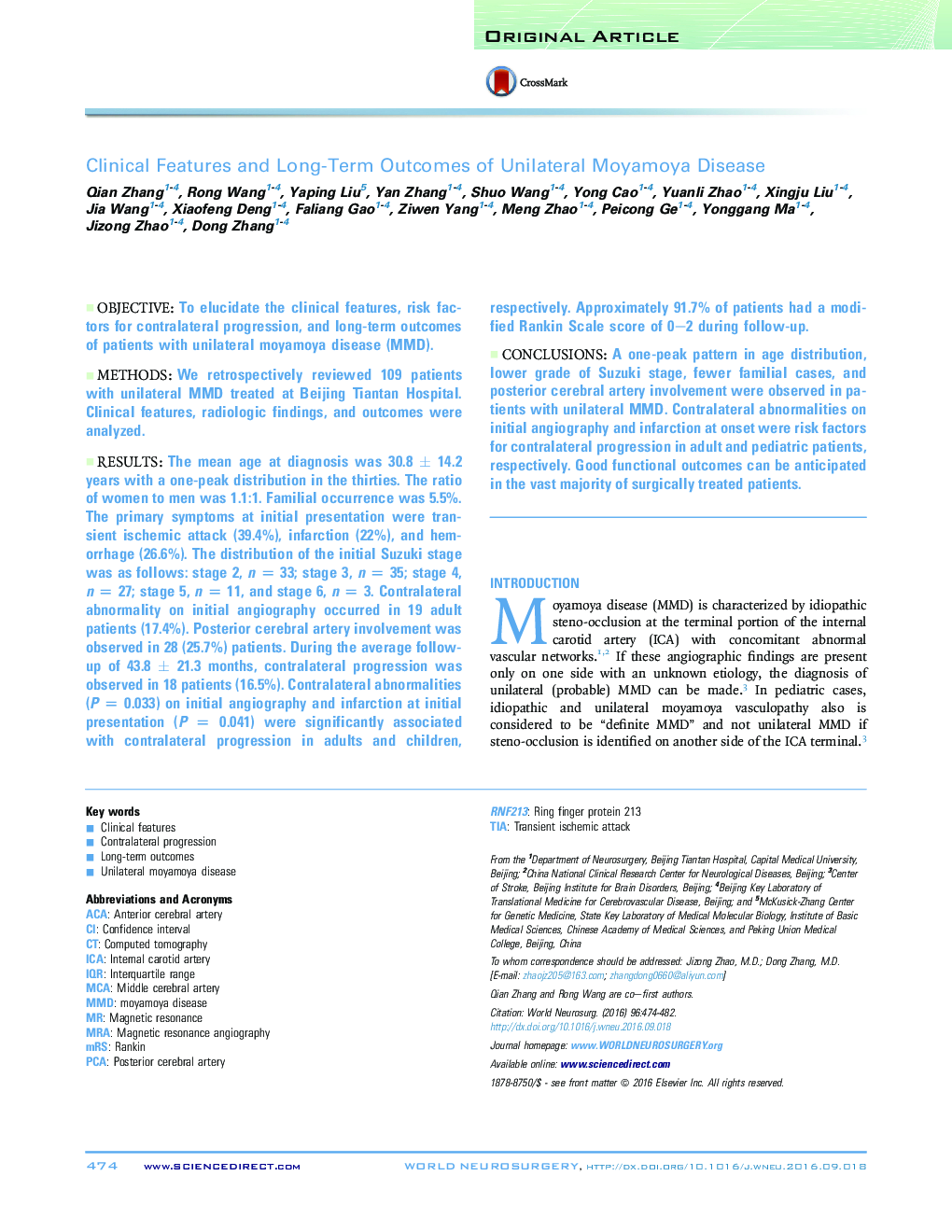| Article ID | Journal | Published Year | Pages | File Type |
|---|---|---|---|---|
| 5635056 | World Neurosurgery | 2016 | 9 Pages |
ObjectiveTo elucidate the clinical features, risk factors for contralateral progression, and long-term outcomes of patients with unilateral moyamoya disease (MMD).MethodsWe retrospectively reviewed 109 patients with unilateral MMD treated at Beijing Tiantan Hospital. Clinical features, radiologic findings, and outcomes were analyzed.ResultsThe mean age at diagnosis was 30.8 ± 14.2 years with a one-peak distribution in the thirties. The ratio of women to men was 1.1:1. Familial occurrence was 5.5%. The primary symptoms at initial presentation were transient ischemic attack (39.4%), infarction (22%), and hemorrhage (26.6%). The distribution of the initial Suzuki stage was as follows: stage 2, n = 33; stage 3, n = 35; stage 4, n = 27; stage 5, n = 11, and stage 6, n = 3. Contralateral abnormality on initial angiography occurred in 19 adult patients (17.4%). Posterior cerebral artery involvement was observed in 28 (25.7%) patients. During the average follow-up of 43.8 ± 21.3 months, contralateral progression was observed in 18 patients (16.5%). Contralateral abnormalities (P = 0.033) on initial angiography and infarction at initial presentation (P = 0.041) were significantly associated with contralateral progression in adults and children, respectively. Approximately 91.7% of patients had a modified Rankin Scale score of 0-2 during follow-up.ConclusionsA one-peak pattern in age distribution, lower grade of Suzuki stage, fewer familial cases, and posterior cerebral artery involvement were observed in patients with unilateral MMD. Contralateral abnormalities on initial angiography and infarction at onset were risk factors for contralateral progression in adult and pediatric patients, respectively. Good functional outcomes can be anticipated in the vast majority of surgically treated patients.
